Highlights
- What began as a small project about biodiversity turned into a rebrand of the whole company, changing everything but the logo and the name.
- I was part of the OPG team that crafted the company’s net-zero climate change plan, and even wrote the first draft.
- In a world awash with net-zero goals, we needed to prove that OPG’s capabilities, commitment, and ambition gave it permission to lead.
- The launch campaign avoided the clichés of climate advertising to show how OPG was rolling up its sleeves.
Launch video
About OPG
Ontario Power Generation (OPG) produces about half of Ontario’s electricity through nuclear, hydroelectric, thermal, and solar assets across the province. It was spun off from Ontario Hydro in 1999, and while it remains 100% government-owned, it operates as a business.
In recent years, OPG’s business has been changing rapidly, spurred in large part by the forthcoming closure of the Pickering Nuclear Generating Station in the mid-2020s. OPG used to be a sleepy operator of legacy Hydro assets. Today, the company has expanded and diversified into new markets and new categories like vehicle electrification, medical isotopes, and energy storage.
Background
I had no idea a little campaign about protecting wetlands and barn owls would turn into one of the most fascinating, rewarding, and important projects of my career.
The genesis of OPG’s repositioning was an environmental communications project aimed mostly at demonstrating the value of OPG’s biodiversity efforts. And yet it was becoming clear that it wasn’t just treehuggers who cared about these things anymore.
The public was demanding action on climate change. Governments were finally getting serious about setting climate policy. Even investors were demanding greater transparency on climate change mitigation and risks through the Task Force on Climate-related Financial Disclosures (TCFD).
OPG had taken the world’s largest single action to fight climate change when it shut down Ontario’s coal-fired power plants in 2014, and it already generated more than 90% of its electricity from carbon-free sources. But it still hadn’t defined a net-zero strategy.
Suddenly, I found myself part of the OPG team charged with creating the company’s climate change plan. Over the course of the next year, I helped refine the framework OPG used to set targets for each of its business units, I crafted the plan’s guiding principles, and I even wrote the first draft of the public document explaining OPG’s approach.

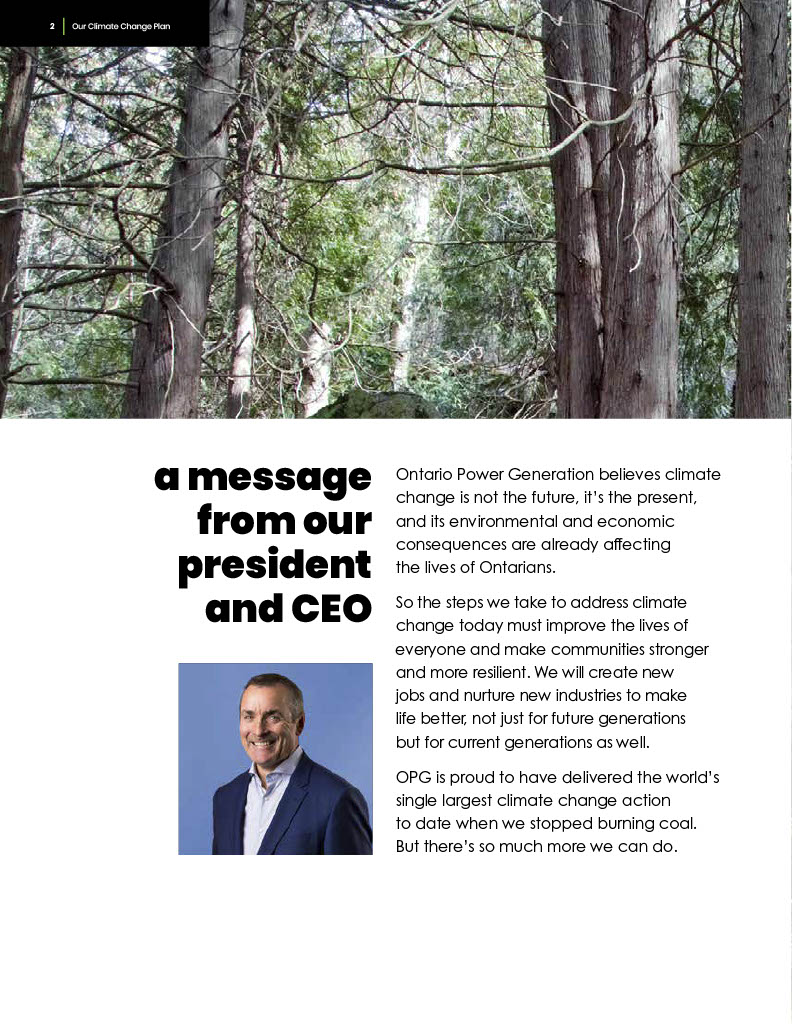
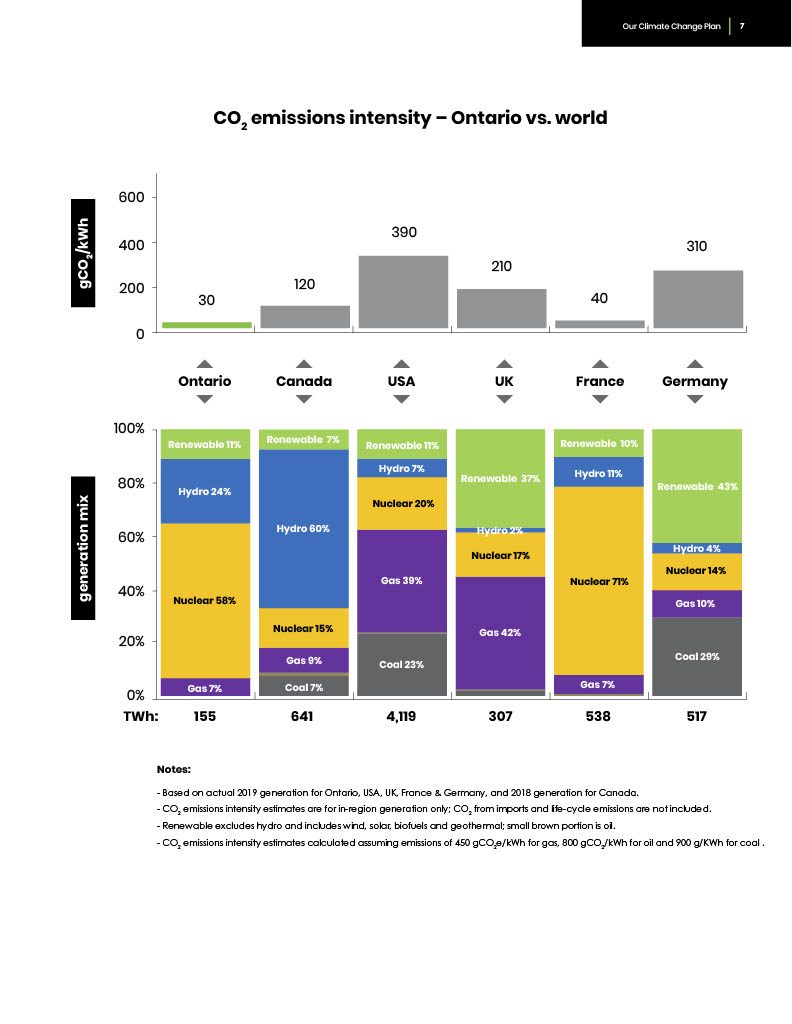
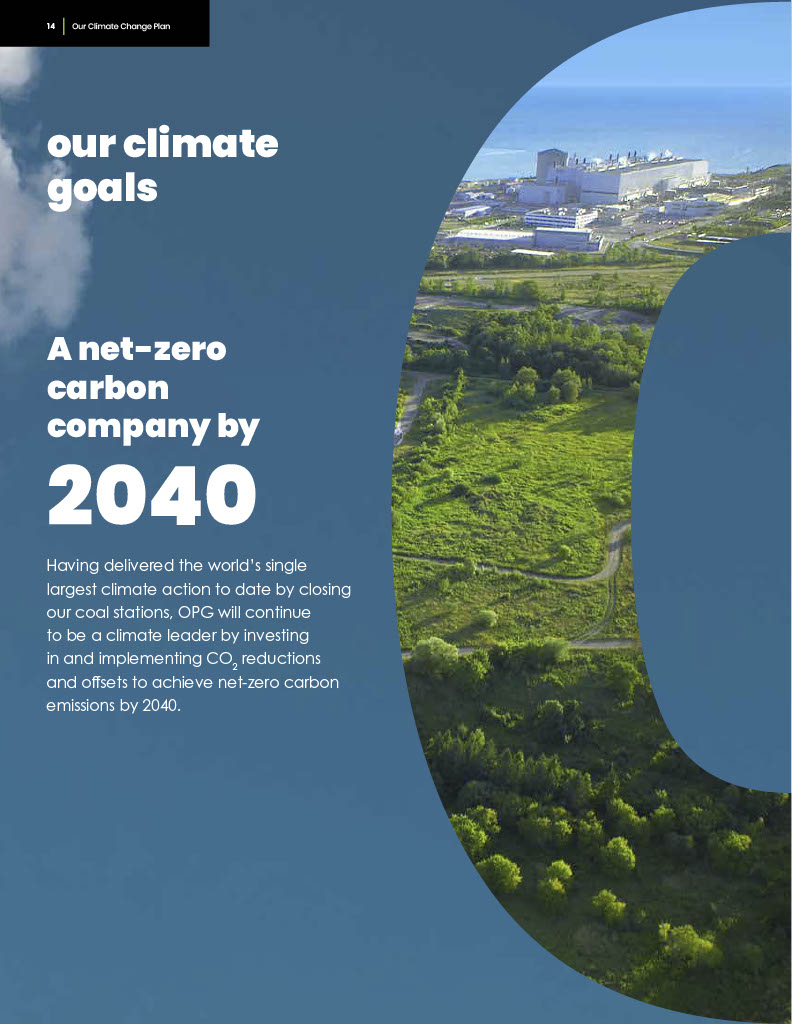
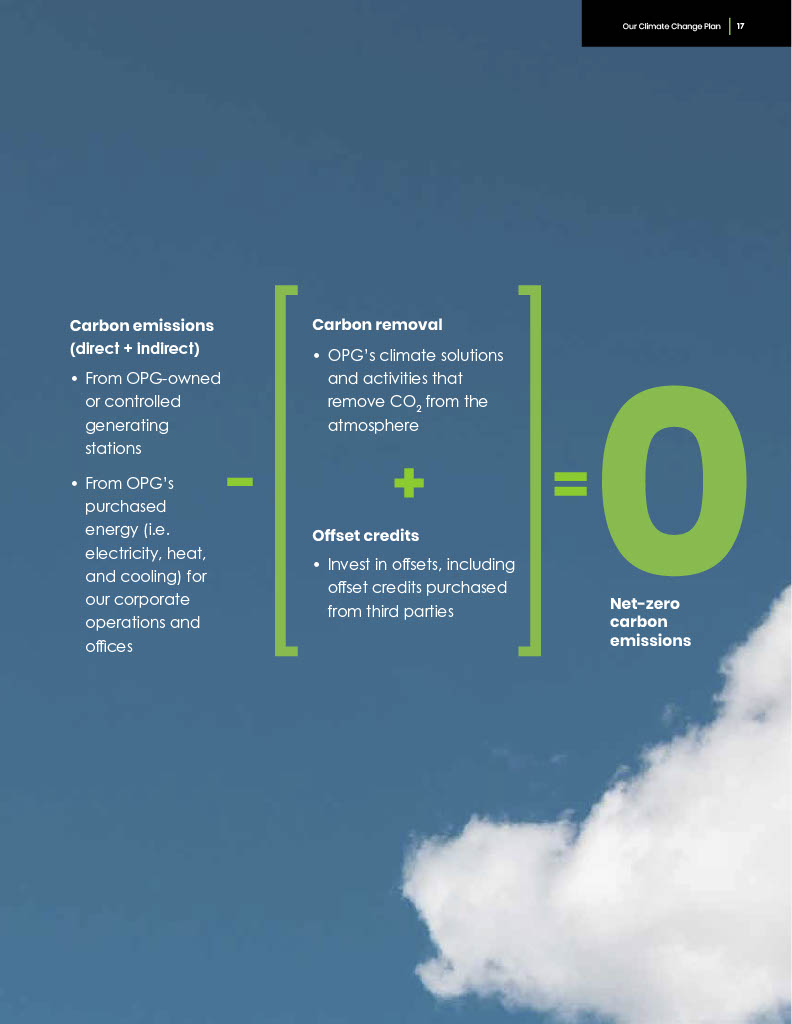
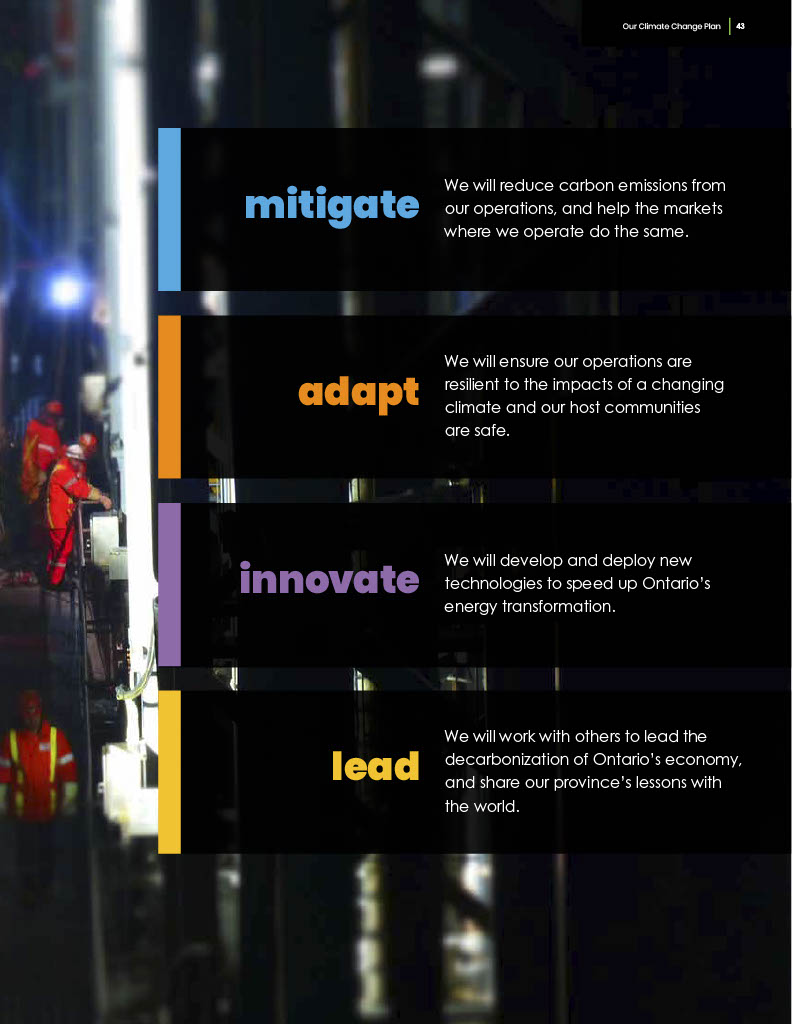
In the end, OPG actually set two climate goals: a net-zero carbon company by 2040, and a net-zero carbon economy by 2050. OPG’s unique role in Ontario’s economy gave it both the ability and the responsibility to consider more than its own climate impacts.
That alone was ambitious. But at a time when more than 21% of the world’s largest companies have set net-zero targets, simply having a target isn’t enough to claim leadership on climate change.
And OPG wanted to lead.
Climate leadership
To earn the right to lead, you need credibility. How did OPG compare with its peers? I developed a model of credibility on climate change with three dimensions: commitment, capability, and ambition.
Climate change credibility model
What does it take to claim leadership?
Commitment: Is the organization truly committed to transformation, or are they more committed to greenwashing? BP talks a lot about renewable energy, and has even set a net-zero target, but the vast majority of its business remains dependent on fossil fuels.
OPG demonstrated its commitment in 2014 when it stopped burning coal, and its government ownership means it has an even greater public responsibility than other companies.
Capability: Does the organization have the necessary technical, economic, and political capital to make a meaningful impact? No one could doubt the sincerity of a consumer brand like Patagonia’s environmental commitment, but they simply don’t have the clout to make a big impact.
As one of North America’s largest and most diversified utilities, OPG does.
Ambition: Is the organization committed to doing the most it possibly can in the fight against climate change? The spectrum is wide. A coal mining company like Peabody Energy has zero amibition to address climate change.
On the other hand, OPG not only committed to changing its own operations, but to helping Ontario achieve net-zero as well.
With its sincere commitment, massive capabilities, and great ambition, OPG could claim deep credibility on climate change, easily putting it in the same league as global clean energy leaders like Ørsted or Vattenfall.
If the corporate rush to set net-zero targets has proven anything, it’s that talk is cheap. The world has enough empty videos with pictures of wind turbines and children laughing. OPG could stand out by showing a little grit.
Key insight
A cleaner world starts with getting your hands dirty.
Idea
Bring climate change down to earth.
Launch campaign
Around this time, I had also been working on a brand repositioning for OPG. In a series of interviews for the repositioning, we had found that Ontarians didn’t realize that Ontario led the world in clean energy — but that they quite liked the idea of global leadership.
Inevitably, the repositioning and the climate strategy collided. Henceforth, OPG would present itself not as an electrical generator, but as Ontario’s climate change champion. The new tagline: Where a brighter tomorrow begins.
While Ontarians overwhelmingly believed in the threat of a warming planet, climate change was still an abstract, quasi-politicized idea. To make it real, we followed three rules:
How OPG talks about climate change
Three rules to follow
People, not polar bears: We don’t talk about climate change as an environmental issue, but as an economic, social, and humanitarian issue. It’s the human world we’re trying to save.
Today, not tomorrow: Climate change isn’t a problem for future generations. It’s affecting the lives and livelihoods of millions in Ontario and around the world, today.
Opportunities, not threats: We talk about the many benefits of mitigating and adapting to climate change rather than the dangers of inaction. Threats paralyze; opportunities motivate.
The campaign was bold and gritty. Previously, the face of OPG’s climate work might have been Sonic, an adorable rescued barn owl. Now, the face of OPG’s climate plan is someone wearing an orange hard hat with some dirt under their fingernails.
In addition to the launch video shown above, we produced a series of social-friendly teasers highlighting OPG’s climate-friendly achievements and initiatives. These introduced energy-involved Ontarians and opinion leaders to OPG’s new targets and drove them to OPG.com to learn more.
Impact
The campaign helped galvanize OPG’s employees around a new mission for the company. The new positioning has earned OPG a seat at the table for discussions about the implementation of carbon policy. It has also opened the door for new global customers and partnerships with industry. It both fed and reflected the re-energization of a great company.
Personally, I’m enormously proud to have played a part in it and grateful for the opportunity to do the kind of work that planners don’t often get to do.
The true impact, of course, will be for the planet — the struggle against climate change will be difficult, but with companies like OPG taking the charge there’s at least some hope.
Credits
- Client
- Ontario Power Generation
- Agency
- Forsman & Bodenfors, Toronto
- Director, Corporate Brand Management (OPG)
- Kathy Nosich
- Senior Manager, Brand and Corporate Projects (OPG)
- Adam McClare
- Director, Environment, Health and Safety (OPG)
- John Beauchamp
- Executive Creative Director
- Glen D’Souza
- Copywriter
- Tony Lee
- Art Director
- Kilpatrick Anderson
- Strategy Director
- Cameron Fleming
- Strategy Intern
- Dagmara Atieva
- Group Account Director
- Masha Bogdanova
- Account Executive
- Nikita Chandiramani